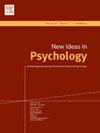一个具身的生物心理社会(神经)多样性模型
IF 2.9
3区 心理学
Q2 PSYCHOLOGY, EXPERIMENTAL
引用次数: 0
摘要
神经多样性是一个常用术语,用于描述被诊断患有自闭症谱系障碍、注意缺陷多动障碍和其他神经发育障碍的个体。这个词的产生是为了表明神经发育障碍的多样性与个体差异有关,并使被诊断患有这些疾病的个体去污名化,以鼓励他们的支持。“神经多样性”一词在暗示所讨论的疾病的主要病因是生物的、生理的和集中决定的方面限制太大。该术语的变体已经出现,主要以某种方式与生物心理社会模型相关。这篇文章提出了一个更具包容性的术语来反映神经发育障碍的多因素起源,被称为具体化的生物心理社会(神经)多样性。这个新术语强调了心理和社会(环境)对人的影响,以及生物影响。该术语允许进一步授权和宣传神经分化个体,以及可以改善其状况的干预措施,同时促进他们在这些方面的真正贡献。本文章由计算机程序翻译,如有差异,请以英文原文为准。
An embodied biopsychosocial (Neuro)Diversity model
Neurodiversity is a common term used to describe individuals diagnosed with autism spectrum disorder, attention deficit hyperactivity disorder, and other neurodevelopmental disorders. The term was created to indicate that there are individual differences related to diversity in neurodevelopmental disorders, and to destigmatize individuals diagnosed with these disorders, in order to encourage their enablement. The term neurodiversity is too restrictive in implying that the major etiological source of the disorders at issue are especially biological, physiological, and centrally determined. Variations of the term have been presented, predominantly related to the biopsychosocial model in one way or another. This article suggests a more inclusive term to reflect the multifactorial origins of neurodevelopmental disorders, referred to as embodied biopsychosocial (neuro)diversity. The new term underscores psychological and social (environmental) influences on persons as much as biological influences. The term allows further empowering and advocacy in relation to neurodivergent individuals, as well as interventions that can improve their condition, while fostering their agentic contributions in these regards.
求助全文
通过发布文献求助,成功后即可免费获取论文全文。
去求助
来源期刊

New Ideas in Psychology
Multiple-
CiteScore
4.80
自引率
3.80%
发文量
37
期刊介绍:
New Ideas in Psychology is a journal for theoretical psychology in its broadest sense. We are looking for new and seminal ideas, from within Psychology and from other fields that have something to bring to Psychology. We welcome presentations and criticisms of theory, of background metaphysics, and of fundamental issues of method, both empirical and conceptual. We put special emphasis on the need for informed discussion of psychological theories to be interdisciplinary. Empirical papers are accepted at New Ideas in Psychology, but only as long as they focus on conceptual issues and are theoretically creative. We are also open to comments or debate, interviews, and book reviews.
 求助内容:
求助内容: 应助结果提醒方式:
应助结果提醒方式:


